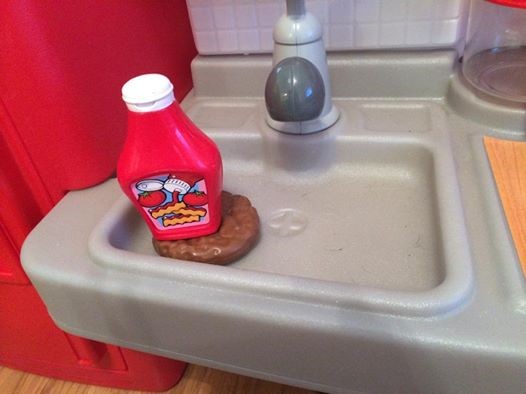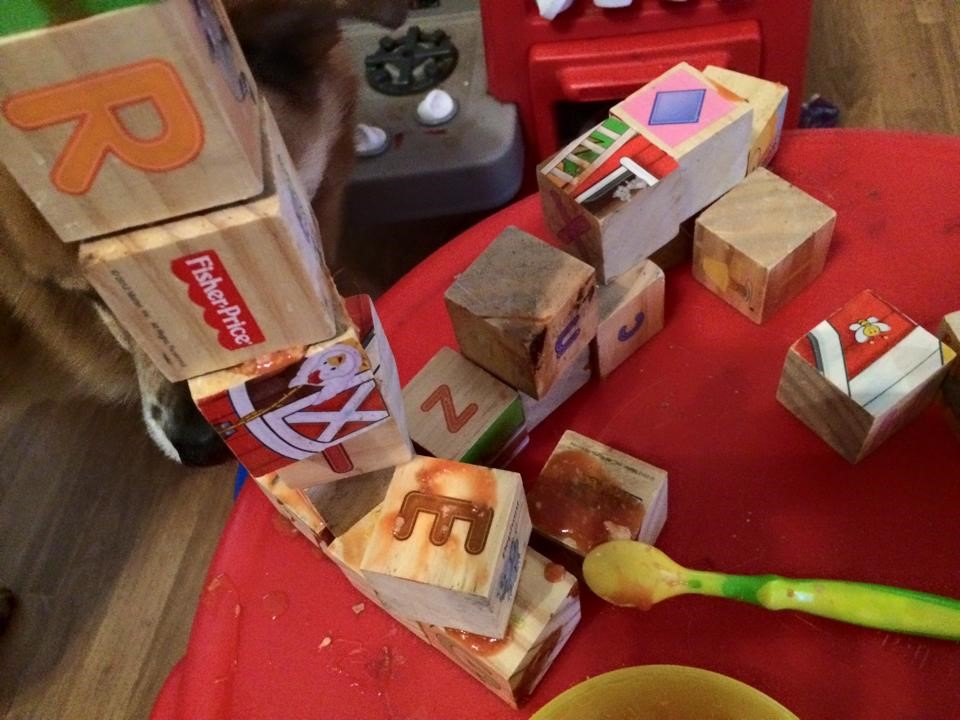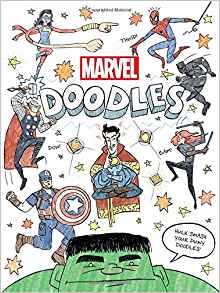Kids are known for their creativity and their ability to think…a bit differently. My parents love to tell a particular story of when I was a little kid. There was this old Irving Berlin tune called “The Near Future” that was written during the Prohibition era, and this song, that was actually written about the frustration of being without alchohol, morphed into a tune about drinking instead. One of the famous comedic versions of the lyrics went like this:
How dry I am, How wet I’ll be
If I don’t find the bathroom key
I found the key, now open the door
Whoops too late now, it’s all over the flooooor!
Well, as a 3 year old, I loved to sing, LOUD. This song became my new favorite, except at the end of the song, I would instead belt out:
It’s too late now, it’s eleven o’clooooooocck!
My parents thought it was hysterical! But aside from the fact that a 3 year old was singing a drinking song, it makes sense, right? To a 3 year old, late means 11 o’clock! Over the years, our minds are shaped to think of things in a very particular way, but when we’re young, the words we speak can mean so many different things.
Of course, this has now started happening with my two girls. Almost every day, they interpret something in a way that I never would have thought of, yet it makes sense in a thinking-out-of-the-box kind of way. For example, when my now 7 year old was 2, I told her to put ketchup on her hamburger. This is what she did:

Technically correct. I got a good laugh out of it for sure, but the funniest part was that she was completely serious! She had put ketchup on her hamburger, and she was proud of it. Nowhere in her mind did she think that this way of doing it could possibly mean anything else.
We are basically programmed by social norms to think “that’s just the way it is”, but our kids haven’t been brainwashed yet. To them, anything is possible. When kids view the world, they don’t see limitations in front of them, they see possibilities. Suddenly, tomato soup isn’t just food, it’s cement for your tower!

And the puddle in the driveway becomes a great place to surf…

Or wash your hair.

One of the dreaded stages of kid development is the “Why” stage.
If you haven’t gotten to the “why” stage with your kids, I promise that you will. It’s a key part of child development. Part of it is made up by the “why do things work this way” kind of questions, but the other part, the more unnerving part, is the “Why can’t it work this other way” questions. For example, one of 7’s recent questions:
“Why can boys run around without a shirt but girls can’t?”
Well other than the “those things tend to bounce” argument, I was out. Questions like those are actually really hard to answer because many times, it really could work that other way! We just don’t do it that way, because that is what we were taught, and that is what society expects.
These days, when I’m with my girls, they force me to wonder what I’m missing by thinking about things only in the way they were presented to me. It also leaves me wondering – when do we lose this ability to think outside the box?
Forbes has a great post, “How Kids Lose Their Creativity As They Age”. They highlight the idea that creativity is what ultimately wins in the world. It’s how we come up with new innovations to solve the world’s problems, and it’s the trait that best predicts success in the workplace. Yet, because of the “Teach to the test” mentality that we’ve adopted in schools, we are training the creativity out of our children. We are teaching them to believe that things can’t be any other way than the way they are now.
So how do we combat this?
How do we make sure our kids know the facts that they need to know, but also allow them to keep that ingenuity and imagination that not only lends itself to success, but makes the world a lot more fun? And can we get those traits back ourselves?
I’ll step out of my role as parent for a second and step into my role as a teacher. I teach students – a lot of them. And what’s more, I teach them at a critical stage of their lives when they are finding out who they are, and what they can do. Specifically, many of them are finding out that they can do things that they’ve been told they can’t do.
In my state (Georgia), students are asked to choose a career path in middle school. Yes, I said that, they choose what they’re going to do for the rest of their lives in middle school. My middle school focus was keeping up with the cool kids, hoping to grow breasts soon, and wondering why the boy I thought liked me was acting so aloof. Yeah, that middle school is when these kids choose what they want to do for the rest of their lives. After that, they take classes that lead them to their chosen paths. They are essentially being told that once they choose this, they can no longer choose anything else. No more thinking outside the box. It’s time to focus now.
That’s how our education system has evolved in the US, and I could make this a post touting major change in the system (please, start pushing to do that!), but we are parents, and we want to know what we can do to improve our kids’ lives right now, right? Well, studies show that home environments that produce creative children do three overarching things: (1) they have a culture of respect for the child, (2) they stimulate independence in the child, and (3) the home is an enriched learning environment. Yeah, that all sounds like jargon, and it is, so I tried to boil it down into some steps that I (and hopefully you too) can understand.
Here are a few things that you can do to accomplish these three things:.
- Focus on what your kids like to do, more than what they have to do. Instead of saying, “you have to read for 20 minutes each night”, instead say “what kinds of books are you interested in looking at?”. Instead of saying “you have to learn math, say “Hey, check out this cool math trick!”. My daughter loves to play with a calculator to see what happens when she adds big numbers. Show them the possibilities instead of the necessities. Give them a chance to love the things they’re learning. While there are things that our children do have to learn, if we present them in a way that the child can pursue that love of learning, the child views learning as more of an adventure than a cage. This also empowers the child and emphasizes that his/her interests are respected.
- Allow your child to participate in family decisions. When we allow our kids to take part in decisions and rules, we are not only showing respect for their intellectual abilities early on, but we are also teaching them to problem-solve. Something as simple as “What do you think we should have for dinner?” can make them feel that their opinions are important. Unfortunately, my kids always answer this with “Candy!”, so I’ve adopted other safer questions, like “What movie should we watch?” or “What should be the reward for good grades?” (also candy).
- Encourage your child to take risks. Studies show that parents of creative children allow those children to make their own mistakes. You can then sit down with your child to reflect on what went wrong. Maybe they want to go without a jacket on a rainy day? Let them! Then they can reflect on why they needed that jacket (after which, you can slip them some dry clothes).
- Be a flexible role model. Showing your child that, sometimes, things don’t go as planned, is a great way to teach them how to think of new ways to accomplish tasks. Children learn by emulating. If you, as a parent, are flexible, they will learn to be as well. Let them see, and discuss, when your plans don’t work out. Even ask them – “What do you think I should do now?”. I also give my kids hypotheticals. Once when we were out and about, I asked 7: “What would we do if we were lost and had no access to a phone?”. She proceeded to come up with strategies to find our way home. Sometimes, it’s all about teaching kids how to think their way out of a paper box.
- Don’t over-schedule your child’s time. When children function by moving from scheduled task to schedule task, they don’t take the time to think about what they could be doing. This one’s tough because things tend to be easiest when we’re on a schedule. But giving your child a choice makes him/her practice a form of creativity. Sometimes I show my kids that the schedule isn’t everything by inserting random events into the plan. For example, if we’re on our way somewhere and a good song comes on, I pull to the side of the road, turn up the music, and we all dance in the car for a few minutes, because why not? Life is more than a set of scheduled time slots.
- Expose your child to many diverse things. Do they like drawing? Encourage it! Show them books of amazing art. Do they like music? Show them Youtube videos of incredible orchstras. Show them that there are people out there who are food stylists, CIA analysts, movie set builders. There are even jobs as snake milkers, pet food tasters, and professional sleepers! Make sure they know that they should keep their minds open, that their interests are valid, and that there are people out there pursuing those types of interests every single day.
- Encourage them to try new things. Even better, also show them that you try new things. A few months ago my daughters watched on as I tried my hand at a new hobby in aerial silks. When you’re hanging 12 feet in the air from reams of silk trying to twist and contort gracefully, it helps if you’re a little bit flexible (and maybe 20 years younger), but my girls saw me go out of my comfort zone to try something new. After I recovered, it was a win overall.
- Try doodle books. A study conducted in 2013 showed that Doodle books are great for stimulating creativity in young children. These books are designed like coloring books, but each page has a question that directs a child to use his/her imagination. For example, a character may be holding a box, and the child is instructed to draw what the character has in the box. There are many different types of doodle books that appeal to a variety of interests.
Check out this Marvel Doodle Book as an example!

(note that I am an affiliate of Amazon and may stand to profit from purchases made from this link)
- Play pretend with your children. This one is hard for me. I’m an old soul and I cling to logic like my life depends on it. My mother, on the other hand, is wonderful at playing with the kids. I can see my kids’ imaginations expand as soon as she enters the room. Studies show that play, and particularly pretend play, is very important in the maintenance and further development of creativity.
Want some good play ideas other than pretend play? Try these!
- Use open-ended play materials to create new things.
- Encourage story telling. Start a story and ask your child to continue it.
- Use creative questioning. For example, you can ask your child questions like “What would be more fun if it were upside-down?” or “What would happen if all cats grew wings?”. Let both of your imaginations go wild!
- Provide basic art materials and think up different ways to draw the same thing (e.g. how crazy can you make a dog look?)
- Turn on the music, give your kids streamers or fabric, and encourage them to move to music however they want!
What’s the take home?
We, as a society, tend to function using a set of structured “have-to”s. We have to go to school to learn facts that will get us to the career that we have to be in because our parents want us to, and then we have to stay there because that’s what we do. Instead of structuring the brains of our children, maybe we should allow them to unstructure our thinking a little.
Do you have some fun activities that stimulate creativity or some funny alternate interpretations that your kids have come up with? I’d love to hear them! Scroll down to share in the comment box!
Contributing References:
Ellermeyer, D. (1993). Enhancing creativity through play: A discussion of parental and environmental factors. Early child development and care, 93(1), 57-63.
Kirkham, J. A., & Kidd, E. (2017). The effect of Steiner, Montessori, and national curriculum education upon children’s pretense and creativity. The Journal of Creative Behavior, 51(1), 20-34.
Dziedziewicz, D., Oledzka, D., & Karwowski, M. (2013). Developing 4-to 6-year-old children’s figural creativity using a doodle-book program. Thinking Skills and Creativity, 9, 85-95.









